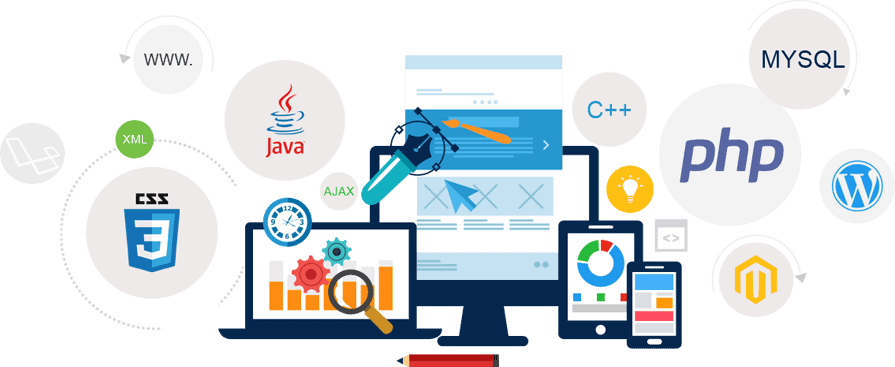In today’s digital age, a website is no longer a luxury for restaurants – it’s a necessity. Just like a mouth-watering menu, you need a website to improve the online presence of your restaurant. A well-planned website not only helps to attract new customers but also showcases what makes your restaurant unique. The majority of restaurant business owners know they need a website, but what all is required to build a website for restaurant is not known by many, and to tackle these questions, we have created a list of restaurant website requirements.
Let’s dig in and understand the primary requirement for restaurant website. To have a live website, you need three things Domain name, Website Hosting, and finally, a Website. To understand this better, let’s take the example of a house.
1. What is a Restaurant Website?
Think of your website as your restaurant’s digital storefront. It’s a virtual space where potential customers can learn about your restaurant, explore your menu, and even make reservations.
2. Why Do You Need a Restaurant Website?
In a world dominated by smartphones and online searches, a website is your golden ticket to visibility. Here’s why it’s essential:
- Attract New Customers: Your website is a beacon in the vast online sea. Potential diners can discover your restaurant, browse your menu, and get a feel for your atmosphere, all from the comfort of their homes.
- Showcase Your Brand: Your website is a blank canvas to tell your restaurant’s story. Highlight your delicious food, unique ambiance, and passionate team.
- Boost Online Presence: A well-optimized website improves your search engine ranking, making it easier for hungry diners to find you online.
- Facilitate Reservations and Orders: Allow customers to book tables or order takeout directly through your website, increasing convenience and driving sales.
- Build Customer Loyalty: Your website allows you to connect with customers beyond the physical dining experience. Share updates, promote special events, and create a community around your restaurant.
3. Setting Strategic Goals for Your Restaurant Website:
As we know, website is essential for any restaurant but before diving headfirst into design and development, let’s explore the foundational elements that will guide your restaurant website’s creation.
4. Brand Identity:
Your brand is the heart and soul of your restaurant. What makes you unique? Are you a family-friendly pizzeria with a playful vibe? Or a quick takeaway with a focus on seasonal ingredients? Understanding your brand identity allows you to create a website that reflects this essence.
5. Target Audience:
Who are you trying to reach? Are you targeting busy professionals seeking a quick lunch or families looking for a weekend dinner destination? Knowing your target audience helps tailor your website’s content and functionalities to resonate with them.
6. Building the Foundation of Your Restaurant:
Now that you’ve defined your brand, target audience, and website goals, it’s time to bring your online vision to life! Let’s explore the exciting steps involved in building your restaurant’s website.
7. Website Builder:
Website is a house or building on that land. In actuality, the website is a pile of code, design, files, and images which make your site. The type of business decides the kind of information you need on your website. Opt for a user-friendly website builder, these platforms offer pre-designed templates.
8. Domain & Hosting:

-
- Domain Name – This is like an address for your website, E.g., www.foodship.com.au or www.your-restaurant-name.com. So when people search for this address on the internet, they can visit your website. Domains names are generally leased for a minimum a year and can be leased from a domain registrar like Crazy Domains for anything between $20 to $30 annually.
- Web Hosting – Hosting is like a land where you build your house. In actuality, they are resources like RAM, CPU, and space on a web server that makes your website live on the web. It is crucial to choose a reliable web hosting. Preferably in the same country where your customers are for speedy website access. Stable web hosting generally costs around $20 a month.
9. Restaurant Website Essentials:

This list will tell you the primary features a restaurant website should have. First and foremost, your website should allow editable control to you (preferable website builder is wordpress), not to your IT guy, not your designer but you for the following features:
- Custom Banner – The ability to customize a banner with pictures and text with good color combinations to create an eye-catching landing page for your customers with welcome message.
- Contact Form – A way for your customer to reach out and able to send a message from your restaurant’s website.
- About Us – This is where you can tell your story to share the vision behind your humble beginning & purpose.
- Image Gallery – Image gallery can come handy feature to showcase your restaurant’s environment, food images, restaurant interiors, and a lot more.
- Events Page – A section where you can announce an event or occasion you are hosting in your restaurant, e.g. New year’s dinner, Live music night, Wine tasting, New Recipe Launch, Birthday party, etc.
- Google Maps – If you want your customer to locate and drive to you without struggle, you can’t operate without this feature. You just have to setup Google My Business for your restaurant to be appear on Google Map. You can get restaurant reviews through Google My Business.
- Social Media links – Inform your customer that you are also on social media so they can connect with you.
- Menu – Well, what is the point of having a website if you don’t showcase your product. Any restaurant customer will expect this information on your website.
- Business Hours – Caring for customer’s time is the key to business success. Not caring for this can ruin your customer’s experience when they visit your restaurant only to find out it is closed at a specific time. Publish business hours on your website.
- Table Reservation – Your customer would feel more welcome and comfortable when they know a table is reserved and ready for them in your restaurant. Also, read how the table reservation system can improve the efficiency, user experience(ux) and operations of your restaurant.
- Online Food Ordering System – No restaurant wants to turn down the takeaway request. However, most businesses still operate on the old school order over the phone system. This way of communication gaps is prone to losses when customers don’t turn up to pick up food. An online takeaway ordering system can be a game-changer here. For a commission-free food ordering system, tap here.
10. Promoting Your Restaurant Website:
Now we have made a great website but million dollar question is, how do you get hungry customers to discover it? Here’s a two-pronged attack:
10.1 SEO:
SEO stands for Search Engine Optimization in which you have to work to rank your website on Google. The purpose of SEO is to improve your website visibility for getting free traffic.
- Keywords: Identify words people use to search for restaurants like yours. Sprinkle them throughout your website content (descriptions, titles) but naturally, not robotically.
- Location, Location, Location: Make sure your address and city are clearly listed. Bonus points for adding your Google My Business profile for a map presence.
- Fresh Content is King: Regularly update your website with blog posts about new dishes, special events, or even the story behind your signature recipe.
10.2 Social Media: Engage and Entice Your Audience
- Show Off Your Culinary Delights: Post mouthwatering photos and videos of your dishes. Highlight the atmosphere with beautiful interior shots.
- Run Contests and Promotions: Create a buzz with giveaways or special offers exclusive to your social media followers.
- Connect with the Community: Respond to comments and messages promptly. Share customer testimonials and positive reviews.
11. Maintaining Your Restaurant Website:
Your restaurant’s website is a living, breathing entity. Here’s how to ensure it stays vibrant and attracts customers:
11.1 Content is King (and Queen):
- Freshness is Key: Regularly update your website with new blog posts, photos, and events. Highlight seasonal specials or chef’s features to keep things exciting.
- Menu Matters: Update your menu online whenever there are changes. Accuracy is crucial – avoid hangry customers searching for a dish that’s no longer available.
11.2 Engage with Your Audience:
- Respond to Reviews: Address both positive and negative reviews promptly. Thank happy customers and show you care about feedback.
- Website Analytics: Your Secret Weapon: Use analytics tools to see how people interact with your website. Analyze what works and adjust your strategy accordingly.
Bonus Tips for Website Success:
Mobile-First: Most websites look great on computers and laptops. Still, to ensure an optimum experience for your customer, your website should be 100% mobile-friendly. Since you are collecting customer’s email and contact detail for table reservations and online food ordering you shall publish privacy policy as well. This will also help your online reputation when your customer searches you on the internet, which concludes the basic restaurant website requirements.
Pro Tip: There are many free website builders (CMS) like WordPress, Drupal, etc are available in the market which you can use for making your restaurant website (no coding knowledge requires). Note: Please read their privacy policy first.



